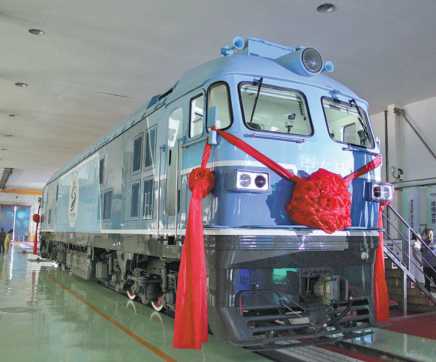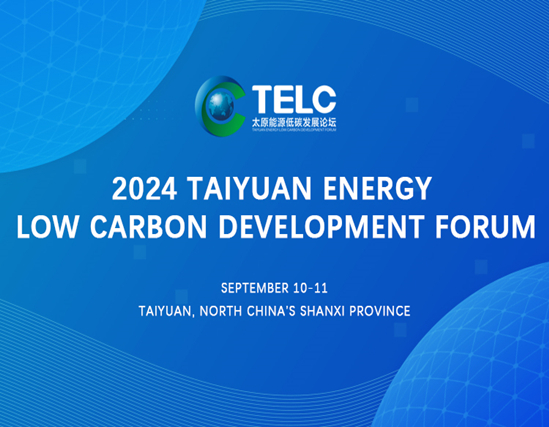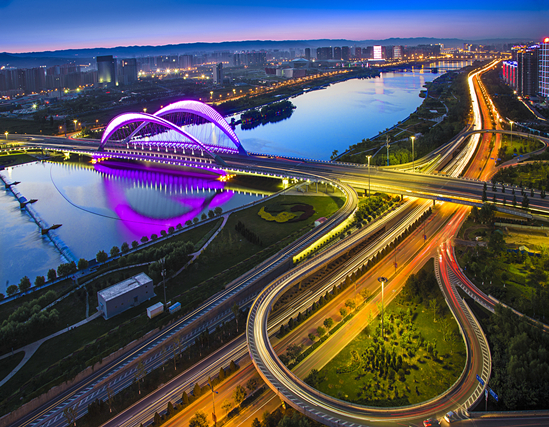Hydrogen gives second life to old railway stock
Updated: 2023-06-25

The hydrogen fuel-cell train at CRRC Datong. Despite its looks, the locomotive is full of new tech. [Photo by Zhao Zhicheng for China Daily]
On June 15, a train locomotive, which looked like a diesel-fueled version, rolled off the production line of CRRC Datong Electric Locomotive Corp, a branch company of China Railway Rolling Stock Corp in the Shanxi city of Datong.
But this was no ordinary locomotive. It was the first hydrogen fuel-cell locomotive in China converted from an internal combustion one, according to Liang Zhenzhong, engineer-in-chief and deputy general manager of CRRC Datong.
"With an output capacity of up to 2,000 kilowatts, this is also the largest-capacity hydrogen fuel-cell locomotive in the world," Liang said.
China's promotion of low-carbon rail transportation has led to the phaseout of many internal combustion locomotives, Liang said, adding that "converting them into new energy locomotives is a new contribution made by CRRC Datong in 'revitalizing idle assets'".
Development of the hydrogen locomotive, which was conducted in cooperation with Ningdong Railway based in the Ningxia Hui autonomous region, started in 2021.
Fu Yongjun, general manager of CRRC Datong, said the new locomotive offers substantially lower operational costs, and great adaptability, flexibility and safety, and boosts environmental protection.
"The use of hydrogen as the fuel means zero emissions of carbon dioxide and other pollutants," Fu said. "Compared with diesel, the hydrogen fuel marks another 50 percent reduction in cost."
Through modular design, the locomotive can adjust its output capacity from 800 kW to 2,000 kW, depending on its loading amount. The cutting-edge battery pack allows a travel time of up to 190 hours on one charge. A full charge can be completed in two hours, according to Fu.
"Safety is always a major concern in the development of a hydrogen fuel-cell locomotive," Fu said. "This is ensured with such innovative designs as intelligent monitoring, hydrogen-cell isolation, and mechanical interlocks, as well as the use of smart fireproofing, insulation, ventilation and anti-explosion devices."
Unlike electric locomotives, Fu said a hydrogen fuel-cell locomotive doesn't need to be connected to the grid with a pantograph: "So it can adapt to all kinds of railways in the world."
The executive said that more than 90 percent of internal combustion locomotives in China can be converted to the hydrogen fuel-cell versions. "Our country has a reserve of more than 7,800 internal combustion locomotives, meaning a huge potential for the emerging industry," Fu said.
Zhao Zhicheng and Yao Xiaomin contributed to this story.



